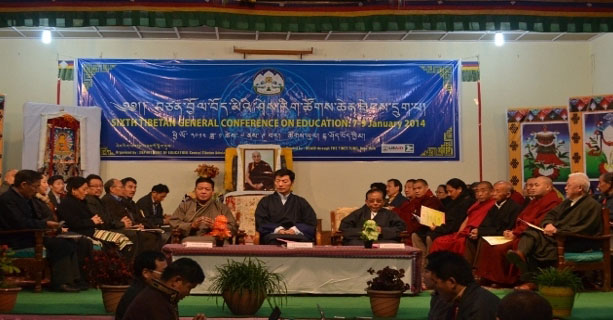The sixth Tibetan General Conference on Education was held from Januay 7-9 and was the largest gathering to date. 236 participants from 76 schools attended from India and Nepal, including principals, directors and teachers. The conference was organised by the Central Tibetan Administration (CTA) Department of Education, and funded by the US Agency for International Development. It took place at Lower Tibetan Childrens Village School in Dharamshala.
The Conference is normally held every five years. This year’s Conference focused on three major issues: professional development for teachers; primary education, especially science and mathematics, and the effective implementation of the CTA’s Basic Education Policy (BEP) which was introduced in 2004. The BEP was established to fulfil the Charter of Tibetans in Exile which stated “…..an ideal education policy meeting the real basic needs of Tibet shall be formulated.” The policy was set up with the aim of preserving traditional Tibetan values and culture, and it may serve as a basis for the education policy of future Tibet.
Speaking at the Conference launch, Sikyong Lobsang Sangey, who is also Education Kalon, said “Education is the only means through which Tibetans can improve our human resources and capacity for the administration as well as the Tibetan cause”. Dr Sangay praised the efforts of Tibetan teachers in raising the overall education level of the Tibetan community, and commented on the huge improvement in the performance of Tibetan students in the academic field as well as in the competitive examinations. He also said that the literacy rate of the Tibetan people is higher than many other south Asian countries.
Penpa Tsering, Speaker of the Tibetan Parliament-in-Exile, addressed the importance of preserving the unique Tibetan culture, language and religion in order to form a robust Tibetan identity in exile, and emphasised the importance of the effective implementation of the Basic Education Policy.
Other guests at the Conference were Ngawang Phelgyal Gyechen, the Chief Justice Commissioner, members of the Kashag, Tibetan parliamentarians, officials of the Education Department and the heads of various autonomous bodies of the CTA.





 Print
Print Email
Email